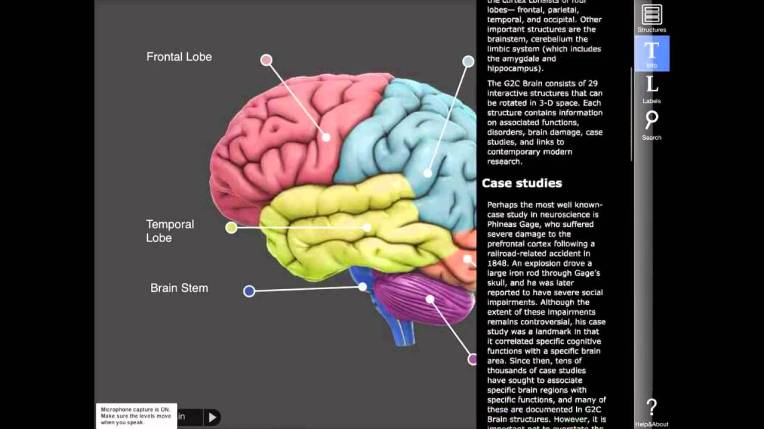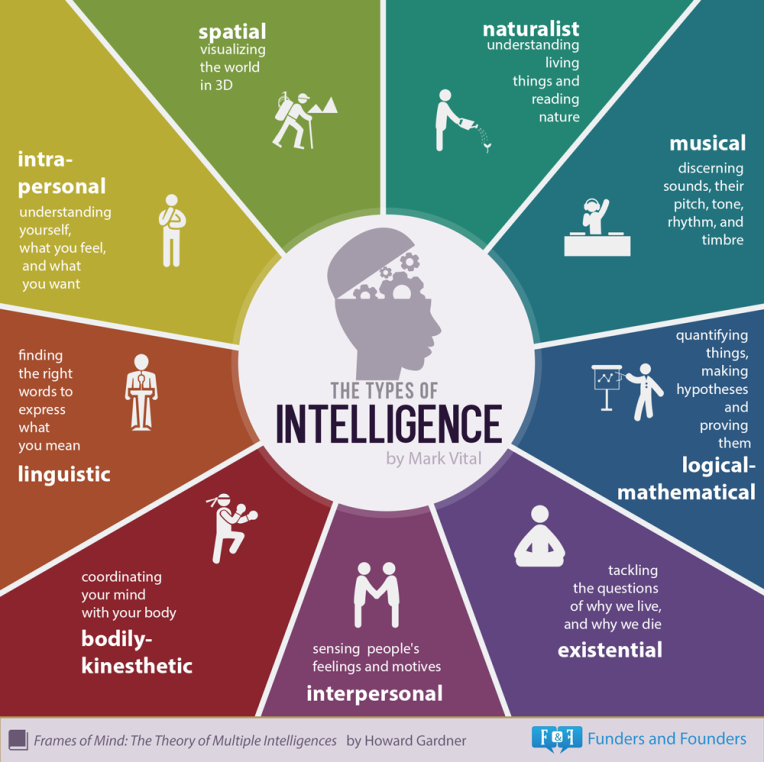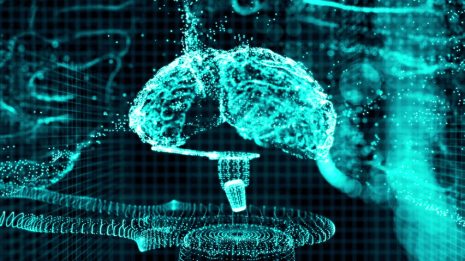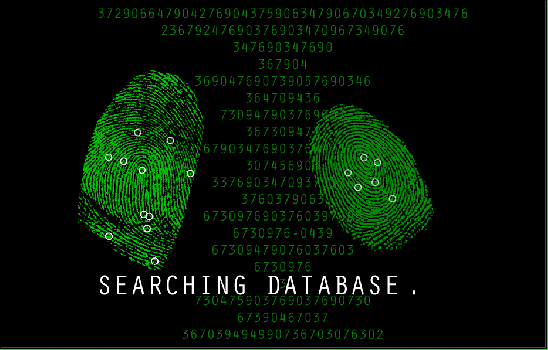Check out this new free Brain app, great for exploring the different parts of the brain, Psychlite has no affiliation with the developers..
Download on IOS here
Download on Android here


Check out this new free Brain app, great for exploring the different parts of the brain, Psychlite has no affiliation with the developers..
Download on IOS here
Download on Android here


The use of non intrusive brain imaging has some new and exciting applications. One such method is the functioning Magnetic Resonance Imagery (fMRI) which allows researchers to attempt to map/estimate brain activity with very specific behaviours. In this case, how it links to specific words. This beautiful mapping really allows you to see how the brain responds to words and how patterns can be identified in certain areas.
Click on the image to navigate around the brain to explore the relationship between words and matter..
Here is a video explaining the tremendous work around it…
The current Medical Model of Mental illness takes the view that our mental health can be categorised, diagnosed and treated in the same way as physical illnesses. This approach is not without its critics who take the view that the medicalisation of human experience is more of a feature of societal control for the political and economic classes to be able to manipulate behaviour to their own whims.
The medical model takes the view that there are natural albeit dysfunctional explanations to mental illness. Historical views have been more supernatural in their attributions to abnormal behaviour. These have included;
The view, however, that these views are a thing of the past could be considered to be an ethnocentric one. Consider the question, is the medical model sociologically still in the minority? With the DSM (US), ICD (WHO) and CCMD (China) as the major classifications systems accounting for coverage of the US, China and the rest of the world there is technically full coverage from the ‘Top down’. What about the bottom up? To what extent are personal beliefs resistant to a more enlightened medical approach to mental illness?
Below is a case that recently has been brought to light in Nicaragua of how one woman’s behaviour was demonised rather than medicalised. The sad case highlights the role of how a mixture of poverty, strong religious beliefs, the role of the supernatural, how women are ‘controlled’ as well as the lack of education can be a recipe for the most extremes of response. Reader discretion advised.
Ensure you scroll left and right and up and down, alternatively hit the pop-out button in the top right of the Padlet.
“Whether you’re navigating a route to work or browsing produce at the grocery store, our brains are constantly making decisions about movement,” Dr. Gallivan says. “Even outside your conscious awareness, your motor system appears to always be operating in the background, coming up with potential actions. Should I reach for the red or green apple? When should I cross the street?”

A study conducted by Queen’s University researchers how identified that the mind is constantly appraising a range of actions before making a decision. The brain’s motor neurons are constantly preparing for a multitude of potential actions to take before making its final decision.
This form of parallel processing has key implications for the notion of the programming of artificial intelligence and in particular the models of decision making replicating the human mind.
The research also raises similar questions to the multiverse theory in physics, which identifies a number of possible simultaneous universes all co-existing not within sight of each other.
Ensure you scroll left and right and up and down, alternatively hit the pop-out button in the top right of the Padlet.
The assumption of fingerprint evidence in criminal investigations; All fingerprints are unique to a singular individual, even identical monozygotic twins have different prints.
Scientific evidence to support this claim; Nil.

Well, what assumptions should we make? Mike Silverman, who introduced the first automated fingerprint detection system to the Metropolitan Police who was the Home Office’s first Forensic Science Regulator, states:
“Essentially you can’t prove that no two fingerprints are the same. It’s improbable, but so is winning the lottery, and people do that every week. No two fingerprints are ever exactly alike in every detail, even two impressions recorded immediately after each other from the same finger. It requires an expert examiner to determine whether a print taken from crime scene and one taken from a subject are likely to have originated from the same finger.”
U.S Citizen Brandon Mayfield was arrested as a material witness to the horrific Madrid bombings in 2004. Held for over a fortnight based on the fact that his fingerprint had been ‘100% matched’ to a bag associated with the bombing containing detonation material. For over 100 years the notion of fingerprints has been the cornerstone of forensic evidence, objective and irrefutable, certainly compared to the well-documented unreliability of eye-witness testimony. In a case that shook all the assumptions made about the credibility of analysis was revealed. Mayfield was released when it came to light that another suspect, Daoud, matched the fingerprints. How could they both be a 100% match?
The Mayfield print was, in fact, not a 100% match as the FBI had claimed and his arrest was thought to be influenced by other factors, in particular, his religious beliefs were thought to have him placed at the top of a list of 20 other similar prints. This bias led to a false positive. In such a high-profile case were the F.B.I guilty of jumping the gun and accusing an innocent man based upon poorly collected and analysis. Their subsequent public apology and $2million settlement to Mayfield suggests just that.
What other forms of bias may be involved in fingerprint analysis?
So what did the F.B.I mean ‘circular reasoning’? Researchers such as Itiel Dror and Dave Charlton has conducted some of the most influential research investigating such examples of cognitive bias in fingerprint analysis.
Dror stated in an article in the Guardian about his research,
“I wanted to see if it is as objective and scientific as it claims to be,” he said. “I wanted to see if the same expert would make the same decision on the same fingerprint if it is presented in a different context.” He presented six fingerprint experts from various countries including the UK, the US and Australia with eight marks from crime scenes (called latent prints) and eight inked marks from suspects. The experts, who had 35 years experience between them, had all given judgments on the pairs of prints in previous court cases – four as matches and four as exclusions.
But Professor Dror engineered the experiment so that none of them knew they were participating in a study, something that he says makes the study much more powerful. “If people know they are studying them they behave differently, especially if you are studying errors,” he said.
Of the 48 tests, the experts changed their decision in six cases and only two of the experts were consistent with their previous decision in all of their eight cases. They were more likely to change their decision if given contextual information, such as “the suspect has confessed”, that conflicted with their previous judgment.
“The same expert on the same fingerprint can make totally conflicting decisions, depending on the context,” said Dr Dror, who presented his results at the British Psychological Society’s annual meeting in York.
Some of Dror’s research (2005) had also investigated how an emotional context may influence decision making. When testing students he found there was some effect on ambiguous prints from top-down manipulations, however, would this been observed in actual fingerprint analysts in the same way? Research by Hall and Player in 2008 went on to investigate the extent to which high and low emotional contexts could possibly influence the decision-making process, lessons quite possibly from the Mayfield case, however, this time in full laboratory experimental conditions. Providing low-level emotional context (case notes of a forgery) compared to a high-level emotional context (case notes regarding a murder) accompanying the fingerprints. Volunteer analysts were found to be affected by the high emotional context but not so much that their decisions were significantly affected.

Hall and Player concluded fingerprint experts appear adept at dealing with fingerprint analysis in a non-emotional, detached manner. There may be motivating factors and bias in the collection and processing of forensic evidence.
Application
Should case notes be provided to analysts if there is an outside chance they might be even unconsciously influenced by the emotional nature of more horrific crimes such as murder and rape? What does it add or more likely detract to the decision-making process or is it just a leftover from historic procedures when such questions never were asked due to the assumption that a fingerprint was either a match or it wasn’t. Where ambiguity from a smudged print was possibly ignored or not brought up in court. Should a number of ‘filler prints’ be given to analysts to ensure a ‘single blind’ methodology to reduce bias, in the same way in a Police Line-up there are multiple possible choices of comparison?
Talking to New Scientist, Simon Cole, a critic of fingerprint evidence at the University of California, Irvine argues a solution might be for each forensics lab to have an independent official who distributes evidence anonymously to the forensic scientists. This would help to rule out any external case-related influences by forcing the scientists to work in isolation, knowing no more about each case than is necessary. At the moment fingerprint examiners asked to verify decisions made by their colleagues do not receive the evidence “blind”. They already know the decision colleagues have made.
Paul Chamberlain, a fingerprint examiner with the UK Forensic Science Service who has more than 23 years experience, says: “The FSS was aware of the need for a more robust scientific approach for fingerprint comparison.” But he questions the relevance of the expert study (Dror, 2005). “The bias is unusual and it is, in effect, an artificial scenario,” he says.
Further Reading
Charlton. D. (2010) Emotional Experiences and Motivating Factors Associated with Fingerprint Analysis. Journal of Forensic Science V55 issue 10 Wiley (Abstract only)
Dror. I (2005) When emotions get the better of us: the effect of contextual top-down processing on matching fingerprints. Applied Cognitive Psychology V 19 Issue 6 Wiley (Abstract only)
New Scientist Article (2005) How far should fingerprints be trusted?
Barnes. J. The History of Fingerprint analysis
Components for comparison Quizlet.
Hall and Player research Quizlet
Evaluation of Hall and Player Quizlet
MOOCs are Massive Open Online Courses run via distance learning and are completely web based. They are usually free to complete and are offered by some of the most prestigious educational institutions in the world such as MIT, Univeristy of California Berkley and Stanford University.
Any cost involved usually occurs if a person wishes to receive certification for completing the course, however, this is not usually a necessity making completing the course free.
Here are some general links to sites offering a range of MOOCs;
Here are some Psychology based ones.